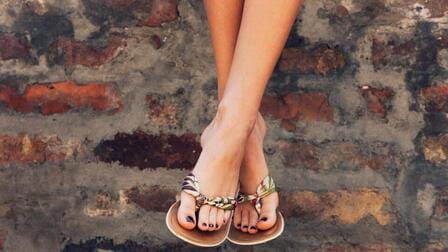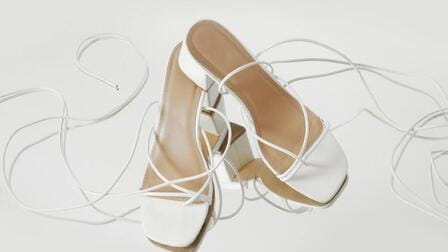Crocs have become an incredibly popular footwear choice for many people in recent years. Known for their comfort and versatility, some have started wearing Crocs to the gym as well. But are Crocs actually a good option for working out? Let's take a closer look at the pros and cons.
How Do Crocs Perform at the Gym?
Are Crocs OK at the gym? When evaluating Crocs for fitness activities, there are a few key factors to consider:
Traction

Traction is important for exercise, especially for activities like weightlifting that require stable footing. The tread on Crocs is quite flat which can make them slippery on certain gym surfaces. They don't grip as well as shoes with deeper grooves or patterns on the sole. This lack of traction increases the risk of sliding or falling during dynamic movements.
Support
Crocs provide very minimal arch support or cushioning. For running, aerobics, or other high impact activities, the lack of support in Crocs can put extra stress on feet and joints. Their foam construction does absorb shock moderately well, but not to the degree of an athletic shoe designed for fitness.
Ventilation

The ventilation holes allow for plenty of air flow which helps keep feet cool and dry during a workout. This is an advantage over closed toe athletic shoes that can get hot.
Protection
Crocs expose the top of the foot. For cross-training and some weight room activities, having the foot covered provides protection against bumps and bruises. The lightweight Croslite material also offers very little protection if heavy weights are dropped.
Style

Gym fashion is important to some exercisers. The sporty look of athletic shoes is more aligned with workout clothing aesthetic. The casual style of Crocs may not appeal to those wanting a performance-focused shoe.
Potential Benefits of Wearing Crocs to Workout
Are Crocs OK at the gym? While they do have some drawbacks, here are a few potential benefits of using Crocs for exercise:
- They are easy to slip on and off in the locker room.
- The ventilation keeps feet cooler than athletic shoes would.
- Cushioning provides moderate shock absorption during low-impact activities.
- They can double as shower shoes after a workout.
- Less odor retention than shoes because of the antibacterial Croslite material.
- Softer on feet than going barefoot in public locker room areas.
Best Practices for Wearing Crocs to the Gym
If you do opt to wear Crocs during exercise, following certain precautions can help make them more gym-appropriate:
- Avoid high intensity cardio, HIIT, or plyometrics where traction is essential. Stick to strength training, stretching, walking, or other low impact activities.
- Use the back strap for a more snug and stable fit during lateral moves or weightlifting.
- Choose Crocs with treads rather than completely smooth bottoms. This provides slightly better traction.
- Wear socks for absorbency and to minimize odor. Barefoot sweaty Crocs can get smelly.
- Select Crocs specifically designed for sport rather than casual varieties. These include improved cushioning and support.
- Don't wear Crocs during outdoor runs or activities. They don't perform well on uneven terrain.
- Replace Crocs frequently as the foam cushioning compresses and provides less support over time.
Example Experiences Wearing Crocs to Workout
Are Crocs OK at the gym? Here are some real world examples of how Crocs performed for exercise:
WeightliftingSession
James wore his black Crocs to the gym for arm day weightlifting. He felt stable enough during bicep curls and tricep extensions. But when advancing to overhead shoulder presses, he noticed his footing felt less secure shifting side to side. For lower body moves like squats, the lack of arch support led to some foot discomfort. He plans to switch back to his regular gym shoes for heavy lifting days.
YogaClass

Sarah wore pastel purple Crocs to her weekday yoga class. The room is heated, so she appreciated her feet staying cool and dry rather than getting hot and sweaty like in athletic sneakers. The Crocs provided enough cushioning for her to comfortably move through vinyasas on the mat. Their slip on design also made changing in and out of shoes simpler in the cramped lobby area. Overall, she was happy with how the Crocs performed for a lower intensity stretching class.
Gym Cardio
Mark wore his Crocs for some cardio time at the gym. He felt they worked great for using the elliptical machine, allowing his feet to breathe while providing cushioning during the low impact motion. However, when Mark finished with treadmill running, he noticed the lack of arch and heel support caused his feet to feel sore. In the future, he'll make sure to wear more supportive running shoes for any jogging or walking on the treadmill.
Potential Alternatives to Crocs for the Gym
While they can work in some cases, Crocs do have downsides for intense training. Here are some better shoe options for optimizing gym performance and safety:
- Cross-training shoes provide excellent traction and lateral support for versatile workouts. Brands like Nike, Reebok, and Adidas make cross-trainers designed for activities like HIIT, weightlifting, and bootcamps.
- Running shoes minimize impact for treadmill jogging or running. Cushioned varieties help absorb shock and reduce stress on feet and joints during repetitive motions.
- Lifting shoes have stiff soles and synthetic leather uppers ideal for heavy weightlifting. The incompressible soles offer stability for moves like squats and deadlifts. Popular brands include Adidas Powerlift and NOBULL trainers.
- Studio/training shoes from brands like Ryka, Bloch, and Asics are designed specifically for group fitness classes. They provide foot protection during floor work along with traction and support for movements in all planes.
- Walking shoes have features like cushioning, shock absorption, and arch support to reduce strain from low impact steady state cardio. They outperform Crocs for comfort during long gym sessions.
5 FAQs about Wearing Crocs to Workout
1. Are classic Crocs OK for the gym or should I get Crocs brand workout shoes?
For casual wear, classic Crocs will work fine for light exercise. But Crocs also makes shoes specifically for sport and fitness which provide better traction and support for dynamic motions. These are a smarter choice for more intense training.
2. Can I do HIIT workouts and plyometrics in Crocs or are they too slippery?
Crocs lack the traction and lateral stability needed for quick agile motions like jumping jacks, shuffles, and box jumps. You'll have better performance and reduced injury risk wearing shoes with grippy tread instead.
3. Is it OK to lift heavy weights while wearing Crocs?
It's not recommended. The compressible foam and smooth tread of Crocs can make it difficult to maintain steady footing during big compound lifts like squats, deadlifts, and Olympic movements. Opt for sturdy lifting shoes with minimal cushioning and solid traction.
4. Should I wear socks with Crocs to the gym?
Yes, socks help wick sweat away, minimize odor, and reduce friction blisters from your feet rubbing on the Croslite material. Just avoid cotton socks which can bunch up and be uncomfortable when working out.
5. Do special features like fuzz lining or charms affect how well Crocs work out?
The fuzz lining can get hot, absorb sweat, and breed bacteria if worn during exercise. Avoid this lining for workout Crocs. Charms don't affect function but can come loose, so best to leave these off your gym Crocs as well.
Conclusion
At the end of the day, are Crocs OK for the gym? They can be in some circumstances but do have limitations compared to athletic footwear designed specifically for fitness. Wearing Crocs allows for ventilation and ease of use but sacrifices traction, protection, and performance.
Workout enthusiasts are likely better off choosing shoes built to support their training goals and prevent injury during intense exercise. But for casual gym-goers doing light activity a few times a week, Crocs can certainly get the job done. Being mindful of the tradeoffs and realistic about your needs is key to determining if Crocs are a good gym shoe choice for you.












